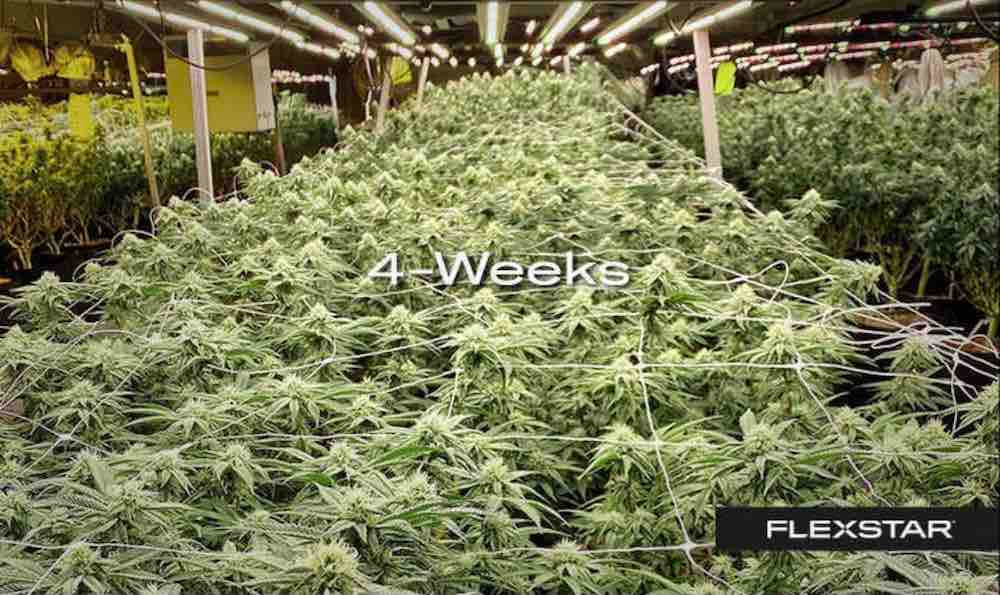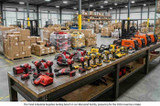Maximizing Your Harvest: Advanced Grow Light Techniques
In the quest for an abundant harvest, using grow lights is a pivotal factor in indoor gardening. The correct illumination can dramatically enhance plant growth, yield, and overall health, making optimal grow light usage a cornerstone of thriving indoor agriculture. This guide delves into advanced grow light techniques, shedding light on how seasoned growers can push their gardens to new heights. By harnessing the power of sophisticated lighting strategies, cultivators can unlock the full potential of their indoor gardens, achieving results that surpass even the most optimistic expectations.
Key Takeaway
The journey to maximizing your indoor garden's yield through advanced grow light techniques is both a science and an art. Understanding the essentials of grow light technology and staying updated with the latest advancements can enhance your garden's productivity and sustainability.
Understanding Grow Light Basics
A fundamental understanding of grow lights and their role in plant development is at the heart of every thriving indoor garden. Grow lights substitute for sunlight, the natural energy source plants rely on to photosynthesize, grow, and reproduce. These artificial light sources emit a spectrum of light waves, mimicking the beneficial effects of the sun's rays but with the added advantage of controlled intensity, duration, and spectrum.
The importance of the light spectrum, intensity, and duration cannot be overstated. Each plant species has unique requirements for light, with variations in the need for blue, red, and far-red wavelengths affecting vegetative growth, flowering, and fruiting stages. Additionally, the intensity of light—measured in lumens or PAR (Photosynthetically Active Radiation) values—along with the duration of exposure, plays a critical role in optimizing photosynthesis and promoting healthy plant development.
Advanced Techniques for Grow Light Setup
Strategic Light Placement
Achieving even coverage and deep light penetration within the plant canopy requires strategic placement of grow lights. The goal is to mimic natural sunlight as closely as possible, ensuring light reaches all plant parts, including lower leaves and branches. Techniques such as using multiple light sources, adjusting the height of lights, and employing light movers can enhance coverage and penetration, leading to more robust growth.
Optimizing Light Spectrum
Customizing the light spectrum for different stages of plant growth is another advanced technique that can significantly impact your harvest. For instance, blue light promotes vegetative solid growth, making it ideal for seedlings and young plants. As plants transition to the flowering stage, red and far-red light becomes more important, encouraging bud formation and fruit development. Adjustable spectrum LED lights offer the flexibility to tailor the light spectrum to the plant's specific needs at each growth stage.
Light Cycling Strategies
Mimicking natural light cycles is crucial for inducing proper growth responses. Light cycling strategies involve adjusting the duration of light exposure to simulate day and night cycles, which can influence plant behaviors such as flowering. Manipulating these cycles allows growers to accelerate growth phases or induce flowering earlier, optimizing the plant's lifecycle for better yield.
Leveraging these advanced grow light techniques maximizes plant health and productivity and enhances the efficiency of indoor gardening operations. By understanding and applying these principles, growers can achieve superior harvests and make the most of their grow light investments.
Leveraging Grow Light Technology
Automated Systems
Adopting automated systems for controlling grow lights marks a significant advancement in indoor gardening. By utilizing timers and programmable controllers, growers can automate light schedules, ensuring plants receive the optimal amount of light without manual intervention. This simplifies the gardening process and increases the precision of light delivery, which is essential for consistent plant development.
Adjustable Spectrum LED Lights
LED technology has revolutionized the grow light market with its energy efficiency and the ability to produce a customizable light spectrum. Adjustable spectrum LED lights allow growers to change the light output according to the specific needs of their plants at different growth stages. This flexibility ensures that plants receive the most beneficial light for vegetative growth, flowering, and fruiting, directly impacting yield and quality.
Remote Monitoring and Management
Technological advancements have made remote monitoring and management of grow light systems possible. This involves using apps and IoT devices to monitor and adjust light settings from anywhere, providing growers with unparalleled control over their indoor gardens. Remote management tools can alert growers to issues such as overheating or system failure, allowing quick adjustments that maintain the optimal growing environment.
The Role of Reflective Surfaces
Enhancing the efficiency of grow lights involves the lights themselves and the strategic use of reflective surfaces within the grow space. Reflective materials can significantly increase plant light availability by redirecting light that would otherwise be lost. From DIY solutions like white paint or aluminum foil to commercial reflective films, there are numerous ways to ensure that every photon of light contributes to plant growth.
Combining Natural Light with Grow Lights
Integrating natural light with artificial lighting offers a sustainable approach to indoor gardening, reducing energy consumption while providing plants with a more diverse light spectrum. This technique involves positioning plants where they can benefit from direct sunlight at certain times of the day, supplemented by grow lights during darker periods. Successful hybrid lighting setups often require careful planning and experimentation but can lead to impressive results with lower energy costs.
Optimizing for Different Plant Types
Understanding and catering to the specific light requirements of different plant types is crucial for maximizing yield. Each species has its unique light spectrum and intensity needs that, when met, can significantly enhance growth and productivity. For instance, leafy greens may thrive under a predominantly blue light spectrum, while fruiting plants might require more red light to flourish. Customizing your grow light setup based on your growing plants is essential for achieving the best possible outcomes.
These advanced grow light techniques and technologies allow unprecedented control over the indoor growing environment and open up new possibilities for yield optimization and energy efficiency. By staying informed and leveraging these advancements, growers can ensure their indoor gardens reach their full potential.
Common Mistakes and How to Avoid Them
While advancing your grow light setup, being aware of common pitfalls is crucial. Overexposure to light can lead to “light burn,” characterized by yellowing or bleaching of leaves. Conversely, insufficient light stunts growth and weakens plants. Ensuring a balanced light intensity and duration specific to your plant's needs is vital to avoiding these issues. Additionally, neglecting regular maintenance of your grow light system can reduce efficiency and potential safety hazards. Regular checks and cleanings are essential for optimal performance.
Measuring and Analyzing Grow Light Performance
To truly maximize your harvest, measuring and analyzing the performance of your grow lights is a must. Tools like PAR and lux meters help quantify the amount of usable light your plants receive. Regular monitoring allows for adjustments, ensuring each plant gets the right amount of light. Furthermore, tracking growth rates and yield over time can provide insights into the effectiveness of your grow light setup, guiding future improvements.
Sustainability and Energy Efficiency
Incorporating sustainable practices into your grow light setup benefits the environment and can lead to significant cost savings. Opting for LED lights, which use less energy and produce less heat, is a great start. Additionally, integrating timers and dimmable lights can reduce energy consumption by ensuring lights are only as bright as necessary and are off when not needed.
Conclusion
Advanced grow light techniques offer a pathway to not only maximizing harvests but also to creating a more sustainable and efficient indoor gardening practice. Growers can achieve unparalleled results by understanding the basics of grow light usage and leveraging the latest technologies and strategies. Remember, the key to success lies in continuous learning and experimentation, always striving to optimize your grow light setup for better performance.
Frequently Asked Questions (FAQ)
1. Can I use regular LED bulbs for my grow light setup?
Regular LED bulbs can be used for growing plants, but they may not be as efficient or effective as grow lights designed specifically for plants, which offer a broader spectrum of light tailored to plant growth stages.
2. How often should I replace my grow lights?
The lifespan of grow lights varies by type. LEDs can last for years before they need replacing, while fluorescent bulbs might need to be changed every couple of years. Regularly check your lights for signs of wear and diminished brightness.
3. How do I know if my plants are getting too much light?
Plants receiving too much light may have leaves that look bleached or burnt. If you notice these signs, consider reducing the light intensity or increasing the distance between the lights and your plants.
4. Is it better to leave grow lights on all the time?
No, plants require periods of darkness to rest and carry out certain metabolic processes. A common light cycle is 16 hours on and 8 hours off, but this can vary depending on the plant type and growth stage.
5. How can I make my grow light setup more energy-efficient?
Switching to LED lights, using timers to control light cycles, and ensuring your space is equipped with reflective materials to maximize light efficiency are all effective strategies for reducing energy consumption.
Call to Action
For growers looking to optimize their indoor gardens with advanced grow light solutions, Tend Industrial Supplies offers a range of products designed to boost your harvest while prioritizing energy efficiency. VisitTendSupplies.com or contact us at sales@tendsupplies.com to explore our selection and find the perfect fit for your gardening needs. Let Tend Industrial Supplies light the way to your most bountiful harvest yet.
Related Articles
Choosing the Right Grow Light for Your Plants
The Ultimate Guide to Indoor Grow Lights for Beginners









